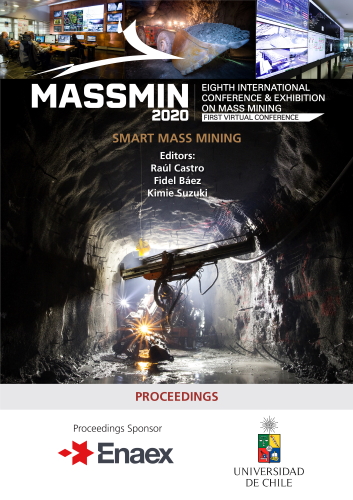Innovative mixed reality approach to rock mass mapping in underground mining

|
Authors: Onsel, EI; Stead, D; Barnett, W; Zorzi, L; Shaban, A |
This paper is hosted with the kind permission of Lulea University of Technology, International Conference & Exhibition on Mass Mining, 2024.
DOI https://doi.org/10.36487/ACG_repo/2063_103
Cite As:
Onsel, EI, Stead, D, Barnett, W, Zorzi, L & Shaban, A 2020, 'Innovative mixed reality approach to rock mass mapping in underground mining ', in R Castro, F Báez & K Suzuki (eds), MassMin 2020: Proceedings of the Eighth International Conference & Exhibition on Mass Mining, University of Chile, Santiago, pp. 1375-1383, https://doi.org/10.36487/ACG_repo/2063_103
Abstract:
Traditional methods of mapping in mines use a geological compass for orientation measurements, a tape measure for length measurements and pen/paper for sketching and taking notes. This has been improved in recent years with a change from compass to smart phones/tablets and the use of tablets for sketching photographic images. A significant improvement is the use of remote sensing e.g. LiDAR and photogrammetry to collect data with subsequent office-based data processing. However, the collected 3D data is usually displayed on 2D monitors which is a very different experience in comparison to fieldwork. The perception of 3D geometry and scale are lost, which may result in biased and limited interpretations. The Microsoft HoloLens is an augmented reality headset comprising a computer with a transparent screen and a 3D scanner. This device allows the creation of a 3D map of the real-world almost in real-time. Using this map, it becomes possible to place virtual objects within the real-world and to know the location of the HoloLens user. As the screen is transparent HoloLens users can see the real-world along with virtual objects, such as previous mapping and drilling completed anywhere within the underground mining operation. Advantage of state-of-the-art new VR/MR technology was taken and a Microsoft HoloLens application which can be used to annotate/draw directly on a rock face was developed and the necessary spatial data in the field for use during mapping is made available. After field work has been undertaken, the collected data can be easily exported to other software without further post-processing. Holographic mapping procedures for virtual rock outcrops constructed from remote sensing data, e.g. ground and UAV based LiDAR and photogrammetry was also developed. This allows office-based mapping of virtual outcrops. The developed software will improve direct outcrop mapping and office-based mapping using remote sensing data.
References:
Barton, N, & Choubey, V 1977, ‘The shear strength of rock joints in theory and practice’, Rock Mechanics, Vol. 10, no. 1-2, pp. 1-54.
Hammah, RE & Curran, JH 1999, ‘On distance measures for the fuzzy K-means algorithm for joint data’, Rock Mechanics and Rock Engineering, vol. 32, no. 1, pp. 1- 27.
Leapfrog 2016, Leapfrog Geo, version 4.0.
LLamazoo 2018, MineLife VR - Virtual Reality Mine Site Planning | LlamaZOO Interactive. Available from: <>. [1 April 2020].
Loook 2017, BGC Engineering and LOOOK: Holographic Mine Reclamation. Available from: <>. [1 April 2020].
Milgram, P, Takemura, H, Utsumi, A & Kishino, F 1994, ‘Augmented Reality: A class of displays on the reality-virtuality continuum’, in Proceedings of Telemanipulator and Telepresence Technologies, pp. 2351–34.
Onsel, IE, Chang, O, Mysiorek, J, Donati, D, Stead, D, Barnett, W & Zorzi, L 2019, ‘Applications of mixed and virtual reality techniques in site characterization’, in 26th Vancouver Geotechnical Society Symposium, Vancouver.
Onsel, IE, Donati, D, Stead, D & Chang, O 2018, ‘Applications of virtual and mixed reality in rock engineering’, in 52nd US Rock Mechanics/Geomechanics Symposium, Seattle.
© Copyright 2025, Australian Centre for Geomechanics (ACG), The University of Western Australia. All rights reserved.
View copyright/legal information
Please direct any queries or error reports to repository-acg@uwa.edu.au
View copyright/legal information
Please direct any queries or error reports to repository-acg@uwa.edu.au
